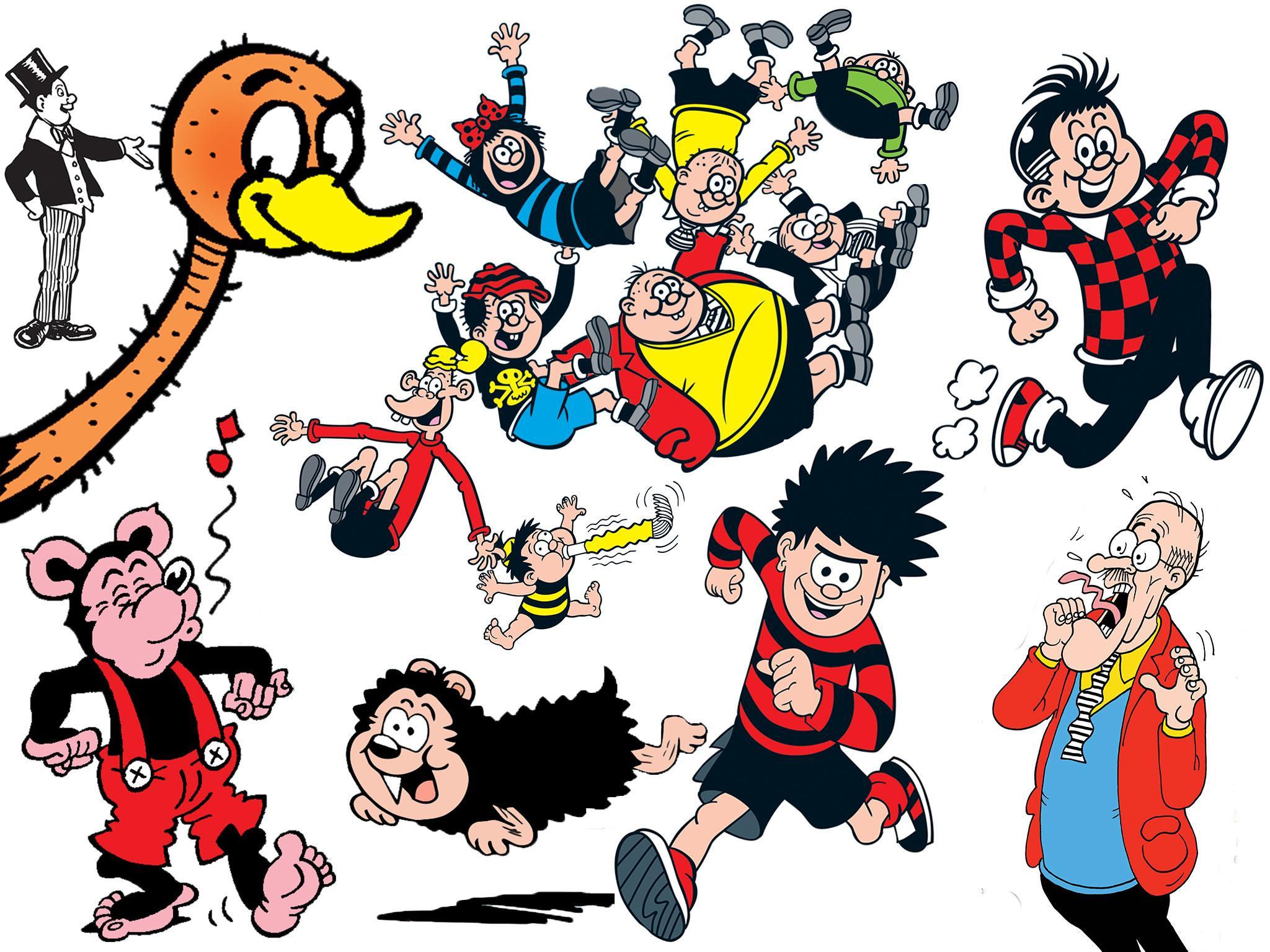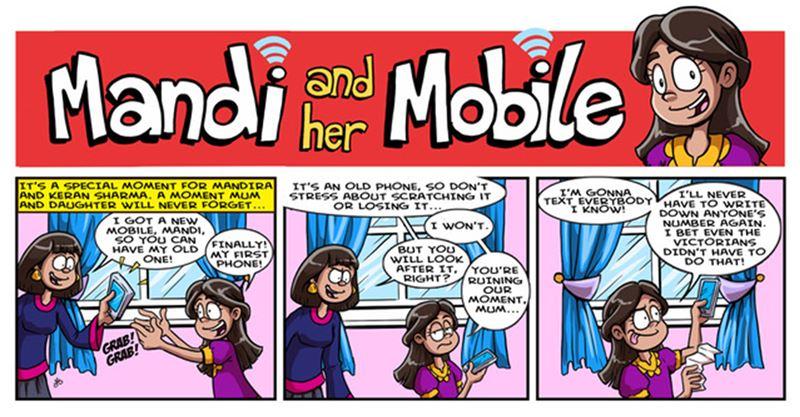The Independent's journalism is supported by our readers. When you purchase through links on our site, we may earn commission.
The Beano at 80: How a British institution is keeping the kids chuckling
‘Two million kids use The Beano’s website, which is the number of kids who read the comic itself back in the 1950s.’ David Pollock hears an incredible story of resilience and reinvention from that hotbed of rebellion, Dundee

Your support helps us to tell the story
From reproductive rights to climate change to Big Tech, The Independent is on the ground when the story is developing. Whether it's investigating the financials of Elon Musk's pro-Trump PAC or producing our latest documentary, 'The A Word', which shines a light on the American women fighting for reproductive rights, we know how important it is to parse out the facts from the messaging.
At such a critical moment in US history, we need reporters on the ground. Your donation allows us to keep sending journalists to speak to both sides of the story.
The Independent is trusted by Americans across the entire political spectrum. And unlike many other quality news outlets, we choose not to lock Americans out of our reporting and analysis with paywalls. We believe quality journalism should be available to everyone, paid for by those who can afford it.
Your support makes all the difference.“Whenever we come up to a major anniversary, people always ask us how much longer The Beano can keep going, whether we think we might actually make it to the next birthday,” says Mike Stirling, the title’s editorial director. “But this time things are different – in 2016 we revitalised ourselves with the creation of Beano Studios, and sales of the comic are increasing. I wouldn’t says that makes us cocky, but there’s a certain satisfaction in knowing that no one’s going to be asking the question this time!”
He says this with a touch of the impudence of The Beano’s Dennis the Menace, Minnie the Minx or one of the Bash Street Kids, a stable of characters who have become intergenerational household names in the UK. Yet if the enthusiasm of the guy in charge echoes the spirit of the comic, this only emphasises one of the key reasons for The Beano’s unlikely but very much ongoing success.
As well as the embrace of other technologies which Beano Studios was designed to bring about – the free website and app have been hugely successful, and the 2017 animated series Dennis & Gnasher: Unleashed! has become CBBC’s top-rated animation, as well as being sold to other countries – it’s the fact the people in charge know and speak to their pre-teen audience so well that keeps readers coming back.
Bolstered by this multimedia success, The Beano’s last set of ABC figures recorded an almost 8 per cent rise; it now sells more than 37,500 copies a week, or 1.86 million copies a year. In a comic market which has dropped by approximately 10 per cent in the same period, these figures are somewhere in the region of miraculous, yet simple testimony to publishers DC Thomson’s knowledge of their market. “Online traffic has grown 900 per cent in the last year,” says Stirling. “Two million kids use the site, which is the number of kids who read the comic itself back in the 1950s.”
Such new technologies are a world away from what was available in 1938, when the Dundee-based newspaper and publishing company had already enjoyed much success with its line of adventure comics and two recent cartoon creations for the Sunday Post newspaper; the still-enduring Broons and Oor Wullie strips. Into this environment of near-guaranteed success, DC Thomson’s head of children’s publishing RD Low authorised a batch of new titles, including one which featured the adventurous ostrich Big Eggo on its cover.
Although many of the characters we most associate with the title hadn’t been developed yet, Stirling says its rebellious tone was baked-in from the beginning. “Dundee was always a rebellious city, in a political sense, and because of all manner of quirks of fate thrown at it. At one point early in the 20th century it was known as She Town, because women ran the city’s jute industry, in which they were very exploited.
“They rebelled against this treatment, though. That’s tied up with the 1911 schoolkids’ strike, when children fought for better conditions across the country – this was especially pronounced in Dundee, because they’d seen their mums do the same when they’d been sent on day release from school to work in the jute mills. I don’t think it’s any surprise that some of the generation of kids who were involved in these strikes also went to work for DC Thomson, and were of the same generation who started this rebellious new comic.”
It wasn’t until the 1950s, however, that The Beano as we know it today began to come together, starting with the introduction of creator David Law’s mischievous Dennis the Menace in 1951, and on into Minnie the Minx, Rodger the Dodger, the Bash Street Kids, Beryl the Peril and more. The list of creators working on the title, all of them dead now, is a titanic roll call of Britain’s great humour cartoonists, including Dudley D Watkins, Leo Baxendale, Ken Reid and more.

“Feeling like an underdog or an outsider in some way is a pretty universal feeling, the only weirdos are those who don’t,” says Iain Sawbridge, chief marketing and content officer at Beano Studios, which is based on Fleet Street in London. “The introduction of Dennis in 1951 made The Beano one of the first brands to really show children behaving like children in popular culture, a version that was anything but the beautifully behaved, seen-but-not-heard simulacra of childhood portrayed in the post-war years.”
In Sawbridge’s view, the Beano success is partly down to the fact that much of the entertainment industry still hasn’t found a way of replicating what The Beano got right more than 60 years ago. “The reality is, the media industry doesn’t ‘think kid’ enough” he says. “So children aren’t always getting the entertainment experiences they deserve in broadcast or digital environments, and the digital world where older kids now spend most of their time isn’t made for 6 to 12s.
“Gaming, YouTube and social media are largely designed for 13 and over, and yet children now spend more time online than on television. Why aren’t there more places made for them, with content they love and environments that are safe? That’s why we created beano.com and our YouTube channel, to complement The Beano comic.”
What made The Beano stand out at the beginning as the most exciting entertainment product available to children, says Stirling, is what has kept it alive even after its stablemate the Dandy – launched in 1937 – has gone (although the hardback Dandy annual is still a bestseller). “The Beano was the first comic to have all kids as their main core of characters, and this core has lasted until today,” he says.
“Our audience can see themselves in them, they can live vicariously. I was quite a safe kid, but I could explore being bad by reading what Dennis did, and imagining what the consequences would be – I could watch him taking those consequences, in fact! It’s a slice of life, but larger than life, our kids in the comic always take things a step further. [The Dandy’s] Desperate Dan is a great character, but there’s not much in a grown man living in the Old West for kids to relate to.”
The mantra of the title these days, and its digital offshoot, is to be “So Beano”. “It’s about looking on the bright side of life, trying to find a laugh in every situation, offering something cool that kids can talk about in the playground,” says Stirling. “We’ve distilled all the principles of the comic and applied them online. We look at the world from a perspective of what we call ‘four-foot thinking’, a kid’s-eye view, at the absurdity in situations, and the injustice in them. Kids are very honest about how they observe things, they can see the emperor has no clothes.”
Sawbridge points out that audience research via school visits, and readers’ emails and responses, as well as interaction with a group of designated young “Trendspotters” around the country, is part of what drives content on the site – which blends strips with videos and more bitesize, online native content – and in the comic. Beano researchers have spent 600 hours face to face with children in the last 12 months, he says, which is only a more advanced way of doing what the title’s early creators did; the Bash Street Kids came about because DC Thomson’s offices overlooked the yard of the local school, and the creators noticed how the kids interacted before feeding this into the strip.
This interaction, he says, has brought about a new character for the 80th-anniversary edition named Mandi. “She was co-created between us and one of our partners, the mental health charity Young Minds, deliberately to address the everyday issues experienced by kids today which can cause stresses or anxieties that can affect mental health. Whenever she appears she will be experiencing some of these issues; for instance, in her first appearance she’s getting her first mobile phone, and the good and bad that come with that, which is something a lot of kids will be experiencing this summer.”
After the anniversary issue – which is guest-edited by David Walliams – appears this week, there are plenty of other plans in the works, including a return for the Dennis and Gnasher Fan Club, a forthcoming live-action Minnie the Minx series aimed at young teens, and further plans to bring characters like Bananaman to the screen. It’s all about simply keeping with the times.

“It’s school holidays and we’ve had this incredible weather, so we’ve found that more kids have been playing outside over summer,” says Stirling. “They’re returning to what we might call ‘traditional play patterns’ – but kids don’t lose these, they always have them, they just reinvent them for themselves. I think as a parent it’s sometimes difficult to accept this, you have this misty-eyed view of what you did or didn’t do as a child, but kids of different generations all essentially want the same things. Part of that is taking a bit of time and attention, and we want to present Beano as a friend to them, so parents know that they can trust it as a safe place for their kids to go online.
“You know, we tell kids to grow up, or we say pejoratively to people ‘you’re acting like a five-year-old’,” he continues. “But why not? It’s a brilliant time in your life, you’re free-thinking, you’ve got a wild imagination, you’ve got no limits and very few rules. Them we get into a system when we’re given a list of things we can’t do, but I think we need to try and retain an element of how we thought when we were six or seven.
“Keep that optimism, keep that hope, and you’ll feel happier throughout your life. People might say that’s naivete, but once again it comes back to how children can spot that the emperor’s new clothes are fake. They have a way of thinking which is pure.”
The Beano’s 80th anniversary on Monday 30 July will be celebrated by a special birthday edition guest-edited by David Walliams. Celebratory exhibitions around the country include ‘Beano: A Manual for Mischief’ at V&A, London, until 12 August, and ‘Bash Street’s Back at the McMenace!’ at the McManus Gallery, Dundee, until 21 October
Join our commenting forum
Join thought-provoking conversations, follow other Independent readers and see their replies
Comments